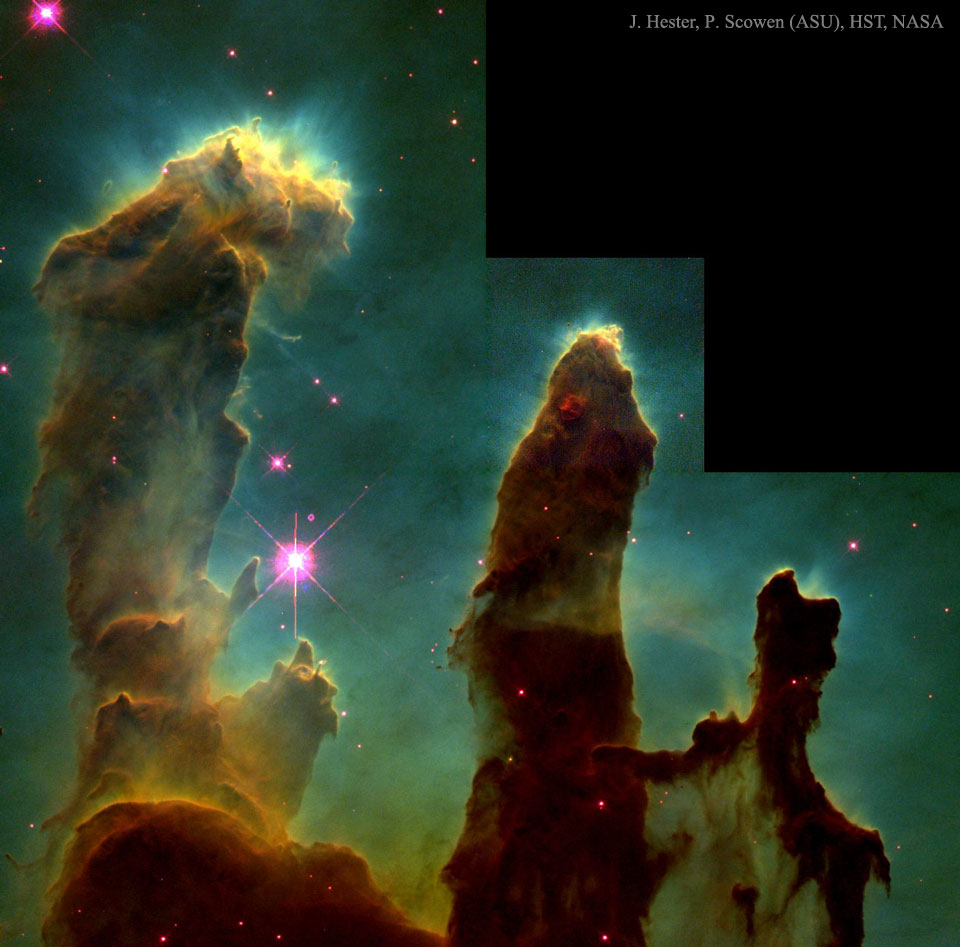2020年12月06日
M16: Pillars of Star Creation
Image Credit: NASA, ESA, Hubble Space Telescope, J. Hester, P. Scowen (ASU)
Explanation: These dark pillars may look destructive, but they are creating stars. This pillar-capturing image of the inside of the Eagle Nebula, taken with the Hubble Space Telescope in 1995, shows evaporating gaseous globules (EGGs) emerging from pillars of molecular hydrogen gas and dust. The giant pillars are light years in length and are so dense that interior gas contracts gravitationally to form stars. At each pillars’ end, the intense radiation of bright young stars causes low density material to boil away, leaving stellar nurseries of dense EGGs exposed. The Eagle Nebula, associated with the open star cluster M16, lies about 7000 light years away. The pillars of creation have been imaged more recently in infrared light by Hubble, NASA’s Spitzer Space Telescope, and ESA’s Herschel Space Observatory — showing new detail.
Be Honest: Have you seen this image before?
Tomorrow’s picture: mountain bubbles
M16: 恒星诞生之柱
影像提供: NASA, ESA, Hubble Space Telescope, J. Hester, P. Scowen (ASU)
说明: 这些黝黑的柱体,看起来颇具破坏性,但其实它们正在形成恒星。这张由哈勃太空望远镜摄于1995年的影像,呈现了许多刚从分子氢气和尘埃柱之顶端露出来,称为“蒸发中之气态云球(EGGs)”的天体。这些长度约数光年的庞大柱体,密度是如此之高,以至于内部发生重力塌缩形成新的恒星。而在每根柱体的顶端,年轻亮星发出强烈的辐射,把云气柱内较低密度的物质蒸发掉,留下了许多内有致密星蛋的恒星育婴室。老鹰星云与它内部的疏散星团 M16,距离地球约7,000光年远。不久之前,美国宇航局的的斯皮策、哈勃及欧洲航天局的赫歇尔太望远镜,在红外光波段为这些创世之柱造影,并找到一些新的细部结构。
老实说:你以前见过这张照片吗?
明日的图片: mountain bubbles



